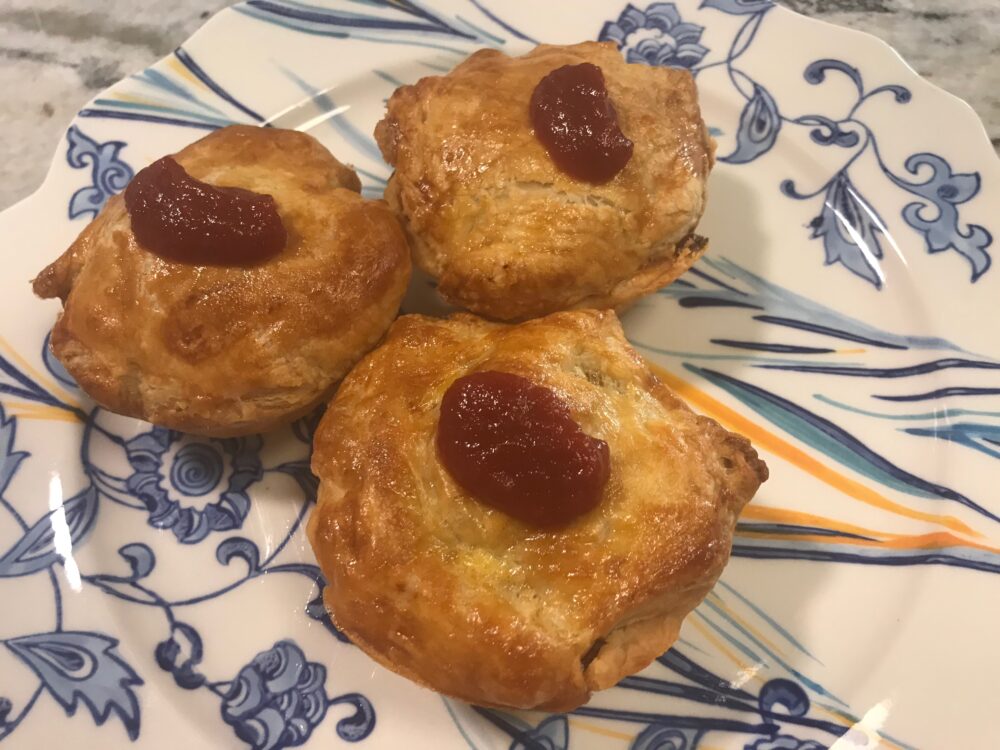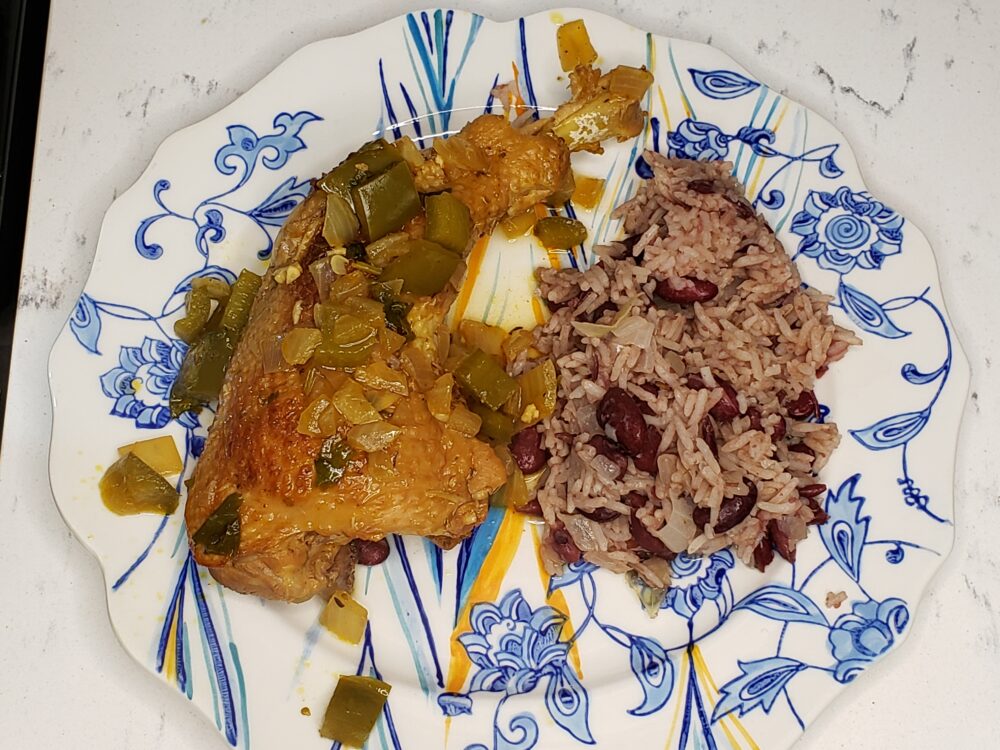We actually filmed this shortly before we saw the movie Encanto, so don’t expect any sing-a-longs during the Colombia video. We didn’t talk about Bruno once, if you can believe that.
We did talk about the biodiversity in Colombia, favorite colors, and corn, lots and lots of corn. So don’t miss our trip to the exciting country of Colombia.
THE PLACE AND ITS CUISINE
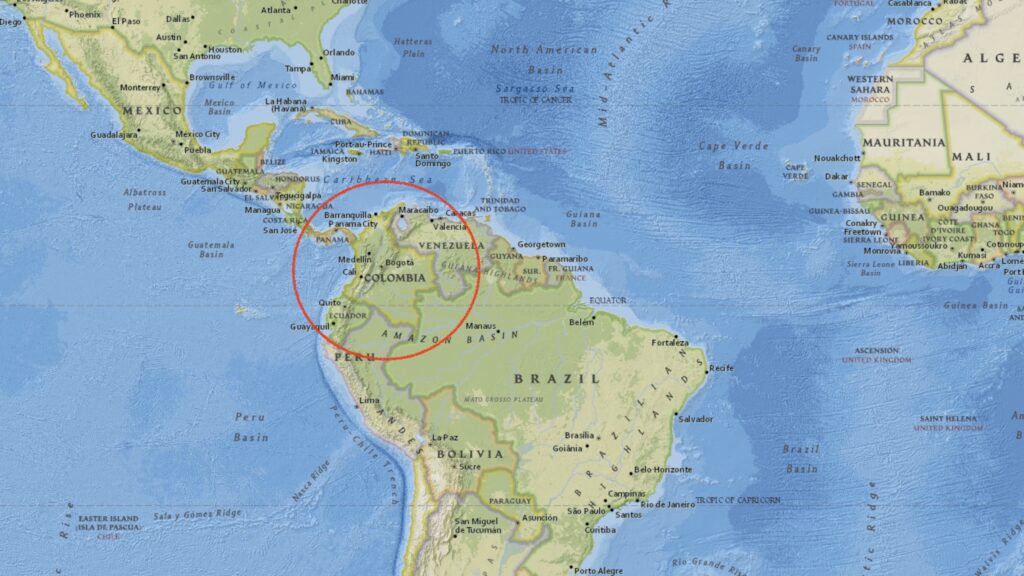
Colombia in many ways is the gateway to South America. It is in the northwest corner of the continent on both the Caribbean and the Pacific Ocean.
We are actually in the process of planning a vacation to Colombia, so expect some first-hand food experiences coming soon.
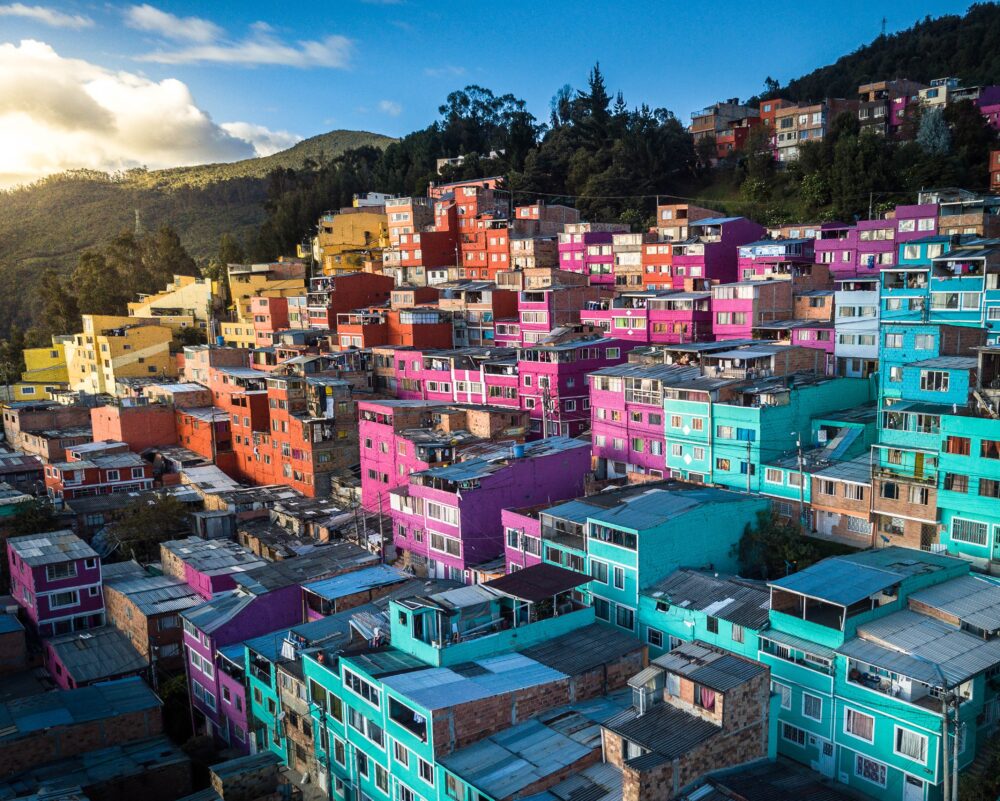
Up until recently, many Americans might not have planned a trip to Colombia due to its reputation as being the home of Pablo Escobar and many drug cartels. The country has put that reputation well behind it and now is a safe tourist-destination where you can experience the diverse culture of the country and some incredible food.
The cuisine is heavily influenced by the indigenous people, the Spanish, and the Africans.
The country is incredibly diverse in terms of topography as well, so it will range from region to region. In addition to coast, there are mountains, jungles, cities, you name it. It also happens to be the second most bio-diverse country in the world (following Brazil).

Corn is probably the most important crop here, as is evidenced in almost every major dish. But not far behind are plantains, rice, potatoes, and cassava. Meat is prevalent in the mountains, fish in the Caribbean, and exotic fruits in the jungles.
Traditional Dishes:
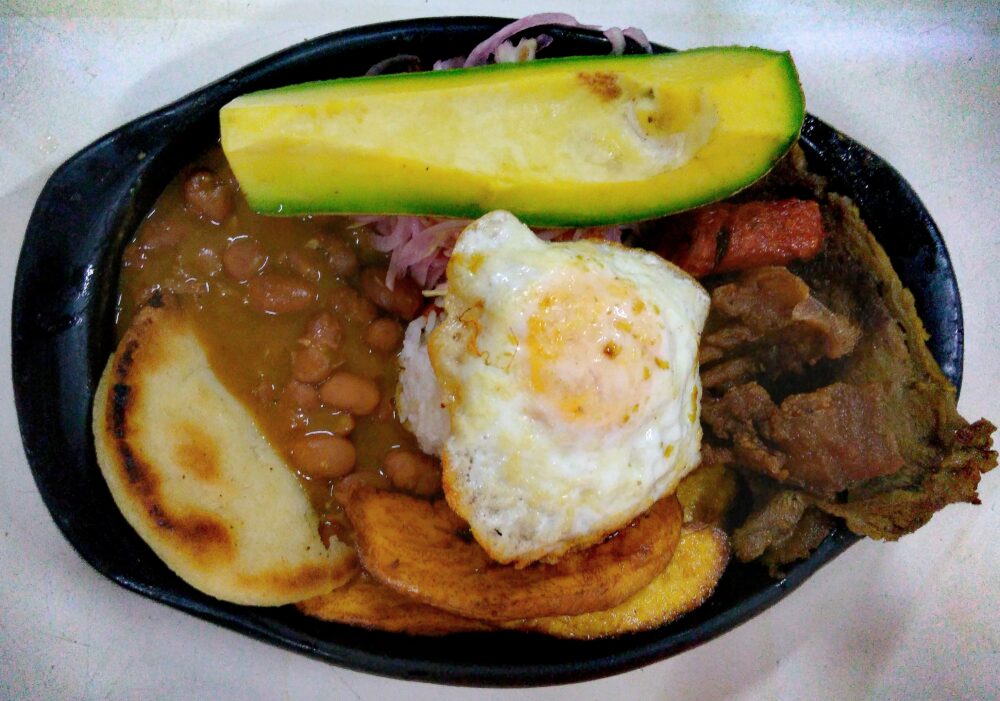
BANDEJA PAISA – often considered the National Dish, this plate of just about everything (rice, fried egg, avocado, beans, blood sausage, arepas, plantains, and more) is as gut-bomby as it gets
AJIACO – this is a chicken stew made with different types of potatoes, chicken, and corn; it’s often topped with cream, or sour cream; this is especially popular in the capital of Bogotá

MOTE DE QUESO – a favorite along the Caribbean Coast, this Colombian soup is made from two different types of local cheeses
CHOCOLATE SANTAFEREÑO – Colombian’s love their cheese; they don’t just make it into a soup or put it on arepas, but they also pair it with hot chocolate, which is what this drink is and is a favorite in the mountains
COLOMBIAN FOOD IN NEW YORK
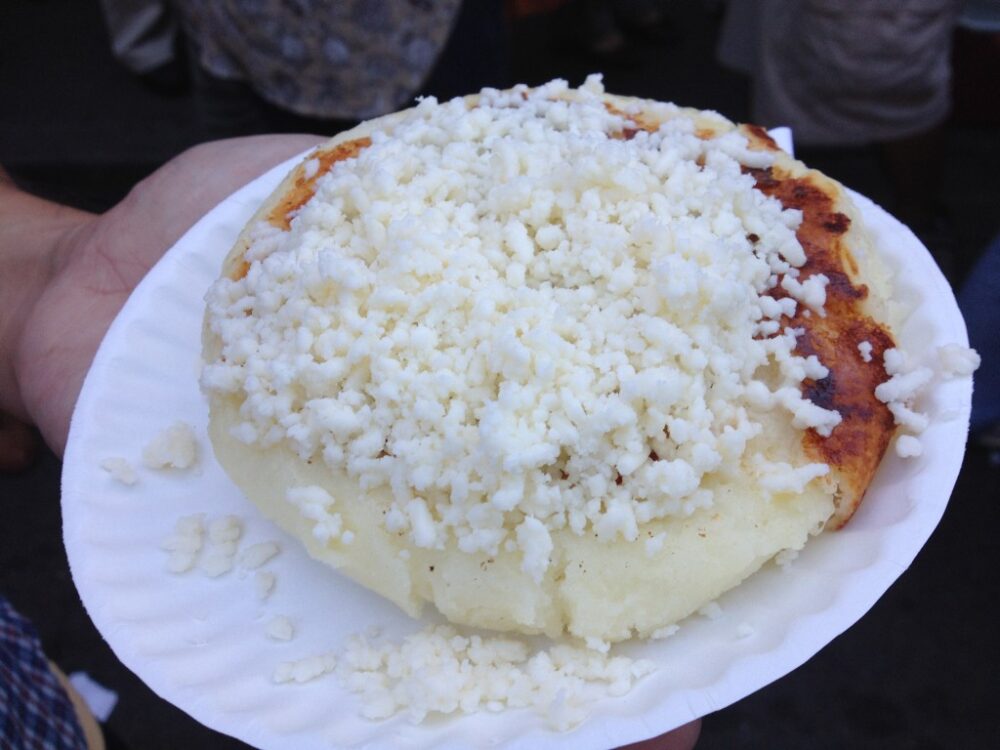
You can’t even begin to talk about Colombian food in NYC without a big shout out to the famous Arepa Lady, Maria Piedad Cano, who started selling arepas on the streets of Jackson Heights, Queens late at night over 30 years ago.
I remember taking the 7 train to this neighborhood years ago to get my first taste of a true Colombian arepa and they were heavenly. Cano and her family have since opened up a number of brick and mortar locations and have expanded greatly. She has definitely had a huge impact on introducing Colombian food to NYC.
Today there are dozens of Colombian restaurants around the city, most still situated in and around the area of Jackson Heights and Elmhurst, Queens. It’s worth a visit for a gatbomb or two.
THE VIDEO
Sam really enjoyed making this video and I found him totally hilarious.
He teaches me the difference between a dolphin and a whale, we talk favorite (and least) favorite colors (who doesn’t like red??), and really discuss the different forms of corn.
Throughout it, of course, we prepare these delicious arepas, which I knew from the beginning Sam would like. As long as he tries them. Check out the video above to see if he does.
THE DISHES
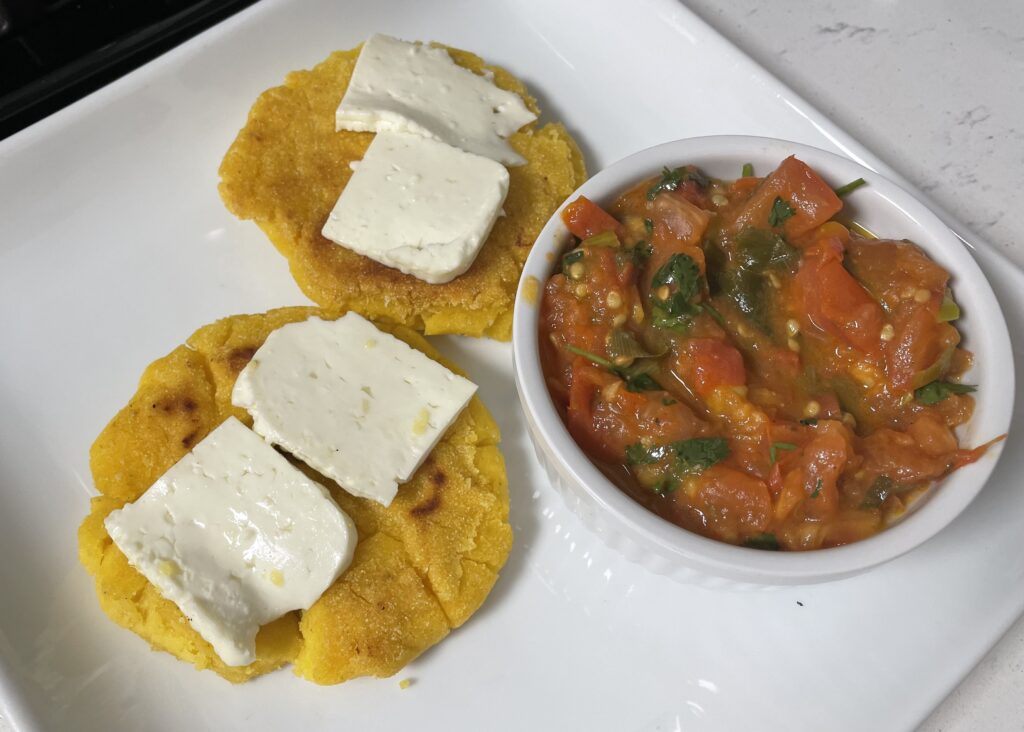
An arepa is rather simple and comes in many forms and also from a few other countries in the northern part of South America (most notably from Venezuela). Colombians, of course, lay claim to it, and it is the first type of arepa I ever tried. And they are so delicious!!
Even within Colombia you can find different regional styles of arepas – including arepa de choclo (folded over like a sandwich), arepa e’ huevo (stuffed with a fried egg), arepa boyacense (sweet corn with sugar or molasses), arepa paisa (white arepa with very little seasoning), and arepa de chicharron (which has crunchy pork rinds in the dough).
For this recipe, we stuck with the Arepa de Choclo, which I have seen prepared like a sandwich folded or open-faced.
Instead of grinding and par-cooking our own corn meal (the way it was done long long ago), we decided to stick with the modern method and located some white and yellow masarepa (see below).
Arepas are eaten in Colombia in place of bread, so you’ll find them topped with things, stuffed with things, and as a side to a hearty meal like Bandeja Paisa
Corn has been an integral part of the Colombian diet from way before Spanish colonization, when indigenous women may have chewed the corn before making it into a paste, processing it, and roasting it in ceramic.
The arepas known and eaten in Colombia today have come along way since then thanks to the invention of certain kitchen tools and industrialization. Spanish and European culture certainly played a part in evolving the arepa to what is eaten today.

As mentioned, this is also very popular in Venezuela, and I have no doubt we will visit this many years from now when we finally make our way down the alphabet. In Colombia, it is often topped with a soft fresh quesito (cheese) and served with a side of hogao.
I’ve spoken to many people from Colombia who were somewhat impressed that we made arepas, but when I told them we also made hogao, they were ecstatic. This tomato sauce, related to Spanish soffits, is made with scallions, and spices and is a staple on every Colombian table.
SPECIAL INGREDIENTS:
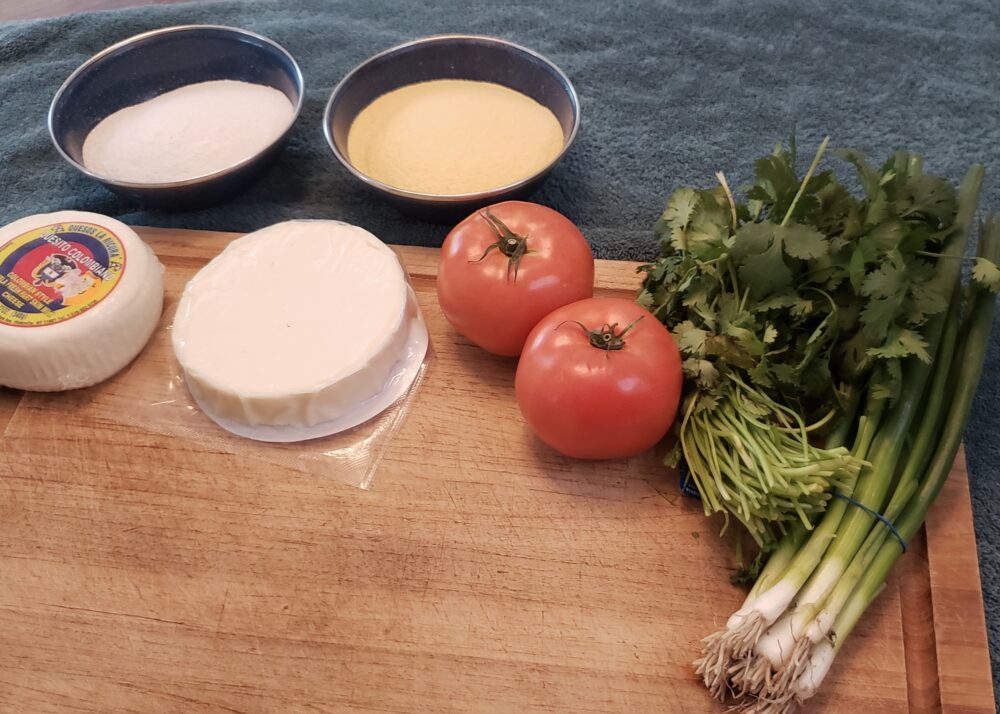
Masarepa
In the old days, Colombians would have made arepas by soaking dried corn in water, separating the seed germs by pounding it by hand, and then cooking and grinding the rest of the corn to make a flower. Nowadays, everybody buys commercial made masarepa.
This white or yellow convenience is pre-cooked, ground corn flour that is the main ingredient in making masarepas. It’s pretty readily available at your local Latin American grocery store.
Quesito Colombiano
We picked up two blocks of cheese labeled Quesito Colombiano – one was a bit crumbly and the other was saltier and firmer. We did a taste test of both and they were delicious.
This is a general term for a semi-soft fresh salted white cheese. It’s in the same world as queso fresco or mozzarella. And it is great for snacking or, of course, on and in an arepa.
THE RECIPE
Recipes inspired by:
mycolombianrecipes.com
amigofoods.com
Recipe Card
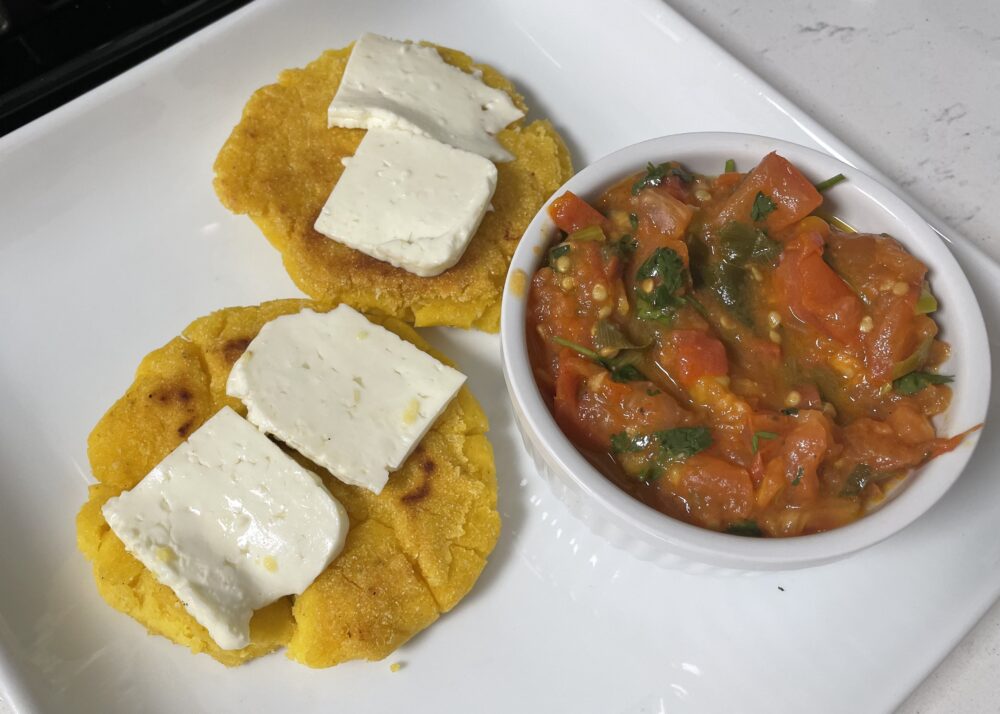
Arepas from Colombia
Description
Basically the bread of Colombia, arepas are the basis for many toppings and often served alongside larger meals. These can work as a snack topped with cheese or butter; a side with breakfast, a vessel for soaking up stewed meats; or even a dinner topped with meat or vegetables. This version is the classic arepa de queso, featuring cheese inside and a buttery crisped exterior.
Ingredients
Arepa Batter
Cooking and Toppings
Instructions
Make Arepa Batter
-
Add warm water to bowl. Add masarepa, melted butter, cheese, and salt. Mix thoroughly and let stand for 5 minutes.
-
Knead with your hands for a few minutes, keeping your hands moist with water.
-
Form the dough into small balls. Place them between 2 pieces of plastic wrap and flatten to about a 1/4 inch disks. Put disks aside.
Fry Arepas
-
Add butter to a non-stick pan or cast iron skillet. Heat over medium. Place arepas in the pan (about four at a time) and cook for 3-5 minutes or until golden on each side.
-
Once flipped, add a slice of cheese to let it slowly melt. Serve with hogao (recipe below)
HOW WE SCREWED IT UP
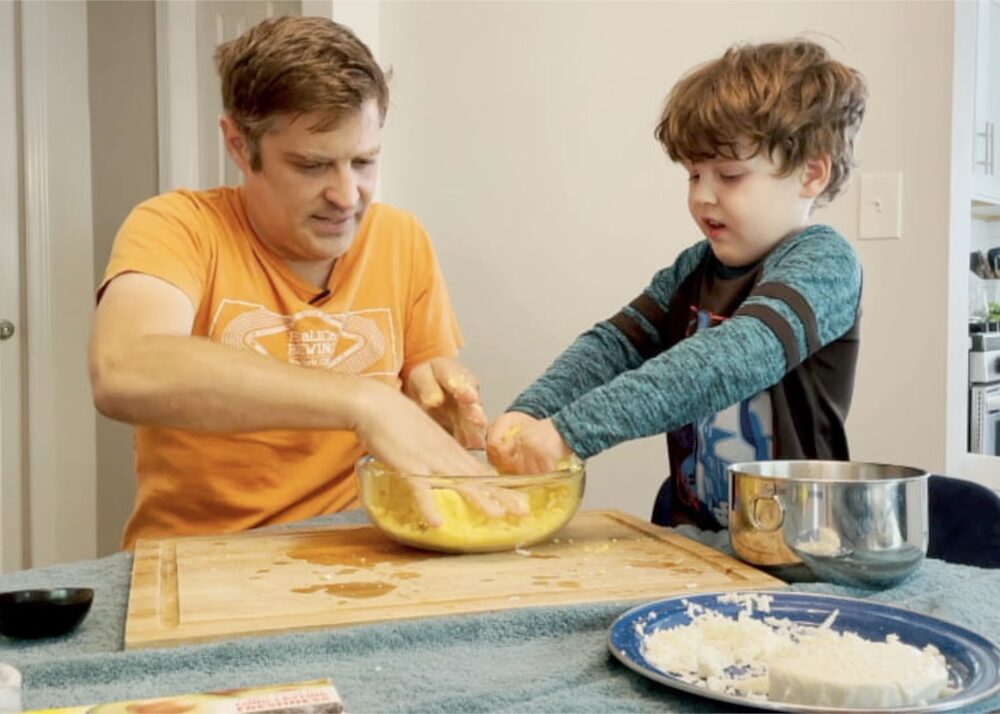
We didn’t do so terribly. While these didn’t come close to the Arepa Lady’s, they did resemble what I’ve had as an arepa. Not so horrible for first time arepa chefs.
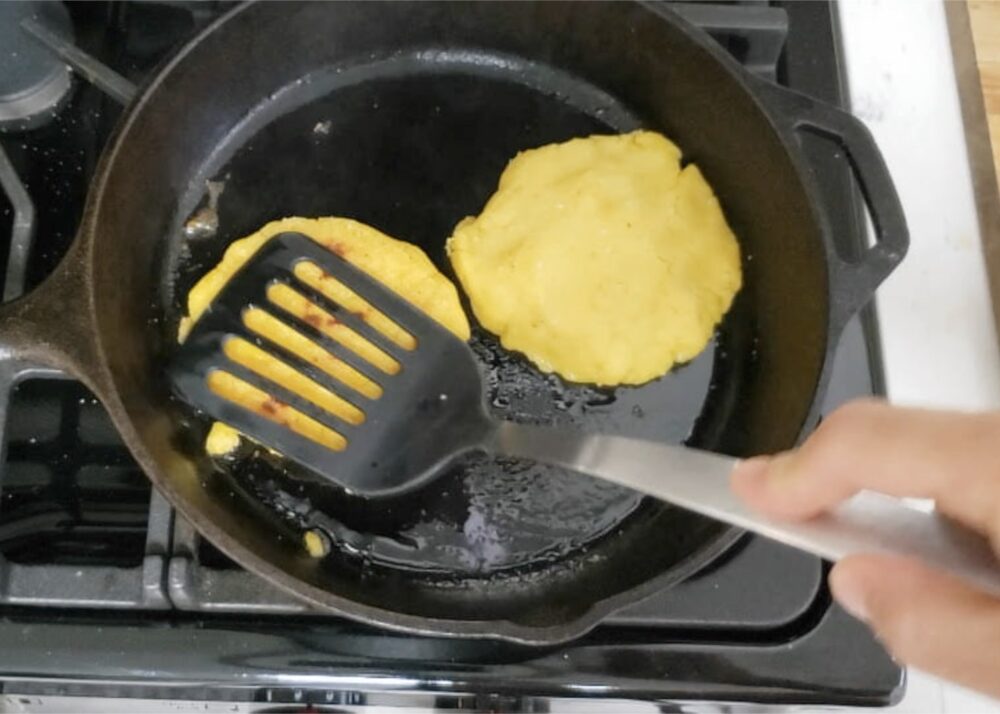
The main problem was that the arepas were a bit dry and we didn’t let them brown enough. Always a problem for me when making pancakes. I think I get rather impatient before I flip them.
Next time, I will make sure that pan is super hot and let them sit for a little longer.
With the cheese on and the hogao (which was nice), they were pretty tasty. See below.
SAM’S REACTION
I had no doubt Sam would love arepas. He likes pancakes, sweet things, and cheese. This really was the perfect combination.
In typical five year old fashion, he first refused the arepa because I didn’t put the cheese he preferred on top (we tried two Colombian cheeses).

Once I fixed the cheese situation, he raised his hands in the air out of excitement. He really loved them.
I mean the kid has good taste (once he takes a risk and tastes something), but also, who would not like a grilled cheese pancake?
NEXT TIME
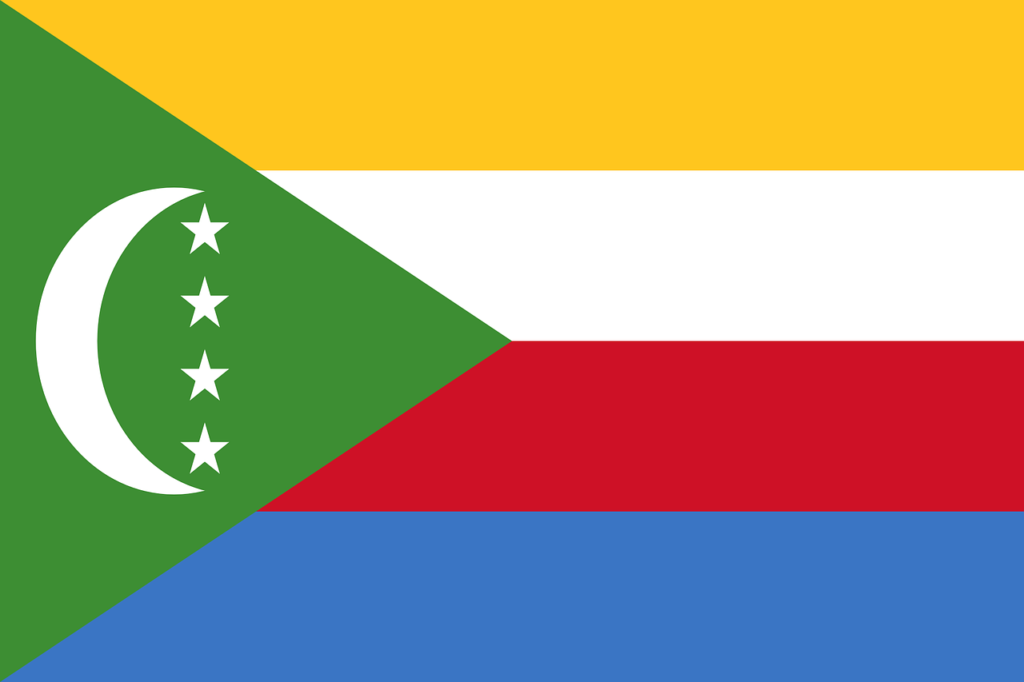
While most of the countries so far have given us stews and breads, next time, we’re delving into a different beast all together. And that beast is lobster, a creature you’ll find in the National Dish of the African archipelago known as the Comoros…




